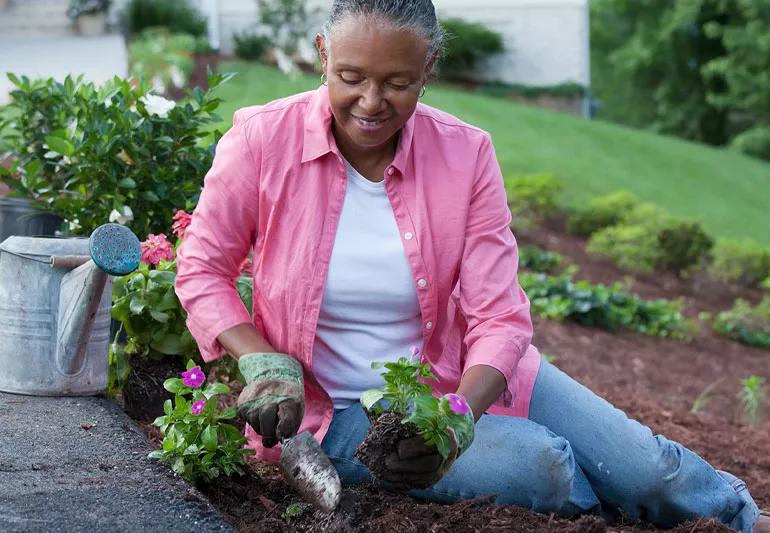Expert Gardening Tips for Developing a Lasting and Eco-Friendly Garden
Starting the journey to develop a eco-friendly and lasting yard involves a collection of calculated selections and techniques that not only enhance the elegance of your area however also add positively to the environment. By picking indigenous plants that are appropriate to your region, you can lower reliance on chemical fertilizers and chemicals while offering important assistance to regional wildlife. Additionally, including water preservation techniques and natural gardening approaches plays a critical duty in keeping a healthy ecosystem. To reveal more sensible techniques and expert understandings, let us discover the essential components that define an ecologically conscious garden.
Pick Indigenous Plants
Selecting indigenous plants for your yard is a fundamental step toward accomplishing sustainability. Indigenous plants are naturally adjusted to the neighborhood environment and dirt problems, making them more durable to regional bugs and illness. This lowers the demand for chemical pesticides and plant foods, hence lessening ecological influence. In addition, indigenous plants generally need less water once established, adding to more efficient water usage.
Past their sensible advantages, native plants play a vital function in supporting local biodiversity. They provide essential environment and food sources for native wildlife, consisting of pollinators such as , butterflies, and birds. This promotes a well balanced ecosystem, which is essential for the health of your yard and the surrounding atmosphere.

Implement Water Preservation
Applying water conservation methods is crucial for keeping a sustainable garden. Effective water usage not just decreases the environmental effect however additionally guarantees that plants get ample hydration without wastefulness. One efficient technique is to make use of drip irrigation systems, which deliver water directly to the plant roots, lowering dissipation and runoff. This targeted method can substantially decrease water usage compared to standard lawn sprinklers.
On top of that, mulching is a useful method for saving water. By using a layer of organic mulch, such as timber chips or straw, around the base of plants, gardeners can lessen soil evaporation and maintain consistent moisture levels. Compost additionally helps regulate soil temperature level and subdues weed development, additional adding to plant health and wellness.
Rainwater harvesting is another sustainable strategy. Installing rain barrels or various other collection systems enables gardeners to capture and save rain, which can later on be utilized throughout dry periods. This not just saves community water but also offers a natural, chemical-free resource for watering.
Finally, picking drought-tolerant plant species can dramatically lower water needs. These plants are adapted to prosper in low-water problems, making them excellent for environment-friendly yards. gardening tips. Applying these water preservation techniques will certainly promote a resilient, sustainable garden
Usage Organic Horticulture Approaches

Pest monitoring in an organic yard depends on integrated parasite management (IPM) strategies. These consist of motivating beneficial insects, making use of all-natural killers like lacewings and ladybugs, and executing plant rotation to interfere with pest life process. Buddy growing, where particular plants are grown together to drive away insects or bring in useful pests, is one more effective method.
Weed control is managed with mulching and manual removal, as opposed to counting on herbicides. Mulch not just subdues weeds but also saves dampness and improves soil health and wellness as it damages down. Organic composts, such as straw, timber chips, and leaves, are particularly helpful.
Produce Wildlife Habitats
Creating wild animals habitats within your garden not just improves biodiversity yet likewise sustains the ecological community's equilibrium. Deliberately spaces that draw in and sustain regional animals, you can produce a flourishing micro-ecosystem that benefits both plants and pets. Begin by including native plants, as these are well-suited to your local environment and offer important food and sanctuary for wildlife. Native vegetation supports a variety of bugs, birds, and little creatures, adding to the environmental network.
Consider including a water function, such as a pond or birdbath, to give a consistent water resource. Water components bring in a range of varieties, from amphibians to pollinators, improving the garden's vigor. Furthermore, mounting birdhouses, bat boxes, and insect resorts uses secure nesting websites and urges biodiversity.
Leave some areas of your yard uninterrupted, permitting fallen leave trash and fallen branches to accumulate. By prioritizing these sustainable methods, your yard can become a shelter for local wild animals, promoting environmental health and wellness and sustainability.
Practice Composting and Mulching
A crucial facet of sustainable gardening, composting and mulching, significantly boosts dirt health and decreases waste. Unlike synthetic plant foods, compost enriches the soil with helpful microorganisms and crucial nutrients, promoting a healthier garden environment.
Mulching, on the various other hand, entails covering the soil surface area with natural or inorganic products, such as straw, wood chips, or shredded leaves. This method uses numerous advantages: it conserves soil dampness, reduces weed development, and read the full info here moderates dirt temperature. Compost also slowly breaks down, adding raw material to the soil and more enhancing its fertility.
To practice efficient composting, guarantee your garden compost stack has an equilibrium of environment-friendly products (abundant in nitrogen) and brownish products (rich in carbon), keeping appropriate aeration and moisture. gardening tips. Routinely transforming the heap speeds up decay. For mulching, apply a 2-3 inch layer around plants, ensuring it read this article does not directly get in touch with stems or trunks to avoid rot
Verdict

Choosing native plants for your yard is a basic action toward accomplishing sustainability.Furthermore, including native plants can enhance the aesthetic charm of your garden. These plants are adjusted to prosper in low-water problems, making them optimal for eco-friendly gardens. Implementing these water conservation methods will certainly foster a resilient, sustainable yard.
In conclusion, developing a lasting and eco-friendly yard involves the tactical selection of indigenous plants, the fostering of water preservation methods, and the implementation of natural horticulture approaches.
Comments on “Vital Gardening Tips for Beginners: Begin Your Eco-friendly Journey Today”